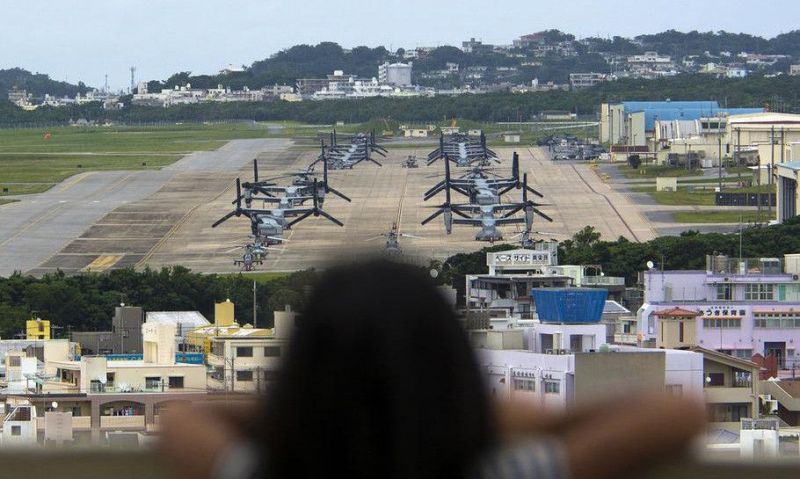
Craft had been grounded since Nov. 29 crash that killed eight members of Air Force Special Operations squad.
The U.S. Marine Corps on Thursday reported the first flight of an MV-22 Osprey in Japan since a deadly crash nearly four months ago temporarily grounded the aircraft across the U.S. and Japanese militaries.
The Corps returned its Osprey fleet in Japan to flight status that morning, according to an emailed statement from Maj. Rob Martins, spokesman for the 1st Marine Aircraft Wing on Okinawa.
“We had our first flight today just before 9 a.m.,” Martins said by phone later Thursday. He said at least one Osprey hovered over Marine Corps Air Station Futenma.
The helicopter-plane hybrids were deemed ready to fly March 8 by Naval Air Systems Command “based on a meticulous and data-driven approach prioritizing flight worthiness and safety,” Martins said in the email.
The Marines, Air Force and Navy lifted the flight ban that followed the Nov. 29 crash in southern Japan that killed eight members of a Yokota-based Air Force Special Operations squadron.
Only the Marines reported their Ospreys flying Thursday in Japan. “Future V-22 flights will only operate after all maintenance, safety and procedural changes have been implemented,” Master Sgt. Nathan Allen, a spokesman for Yokota’s 374th Airlift Wing, told Stars and Stripes in an email.
The aircraft has two rotating engines that allow it to take off and land like a helicopter but fly as a fixed-wing aircraft.
“The timeline for the resumption of flight operations of V-22 operated by U.S. Forces in Japan continues to be closely coordinated between the Government of Japan and the Government of the United States and depends on the operational requirements unique to the unit’s mission profile,” Allen said.
The wing doesn’t comment on specific flight plans, he added.
Defense Secretary Lloyd Austin and Japanese Minister of Defense Minoru Kihara confirmed Wednesday they would resume Osprey flights in Japan, according to a readout of their phone conversation released by Japan’s Ministry of Defense. Japan also grounded its fleet of 14 Ospreys in wake of the crash.
The ministry in a statement Wednesday said Osprey flight operations in Japan will differ from unit to unit depending on the mission, operational requirements and the status of safety measures.
“Going forward, the Ground Self-Defense Force Ospreys and the U.S. military Ospreys in Japan plan to regain their ability to respond to missions in stages,” the statement said. “Specifically, we will first carry out maintenance and education as indicated as safety measures to prevent the recurrence of the recent accident.”
An Air Force investigation of November’s crash found “a materiel failure of a V-22 component,” according to a March 8 news release from the Pentagon, which has not identified the component or released the accident report. The released said “officials used the time to do a thorough review of the mishap and test risk-mitigation controls.”
In Japan, basic flights will start Thursday, carried out at the discretion of unit commanders, according to the Defense Ministry.
“This process will not be for all Ospreys to start flying at once, but will be carried out in stages, starting with the aircraft that have completed preparations such as maintenance,” its statement said.
During the grounding, Naval Air Systems Command developed risk mitigation controls to assist with safely returning the V-22 to flight, Martins said.
“The Marine Corps has accordingly enacted a deliberate plan to comply with new risk management measures, after which we will resume flight operations with all Marine Corps MV-22 squadrons,” he said.
Osprey pilots of the 1st Marine Aircraft Wing will resume flying after they “carefully regain” currency and proficiency in their missions,” according to the statement.
“Safety, both in this process and for the local communities, is our paramount priority,” Martins said.
The wing’s mission will continue with a focus on the safety of Marines, sailors and local communities, wing commander Maj. Gen. Eric Austin said in Martins’ statement.
The MV-22 is a key to the success of the wing and the III Marine Expeditionary Force on Okinawa and plays a central role in Marines’ ability to respond in time of crisis and work with allies, Austin said.
“We are pleased to be flying our MV-22s again,” he added.
- News

